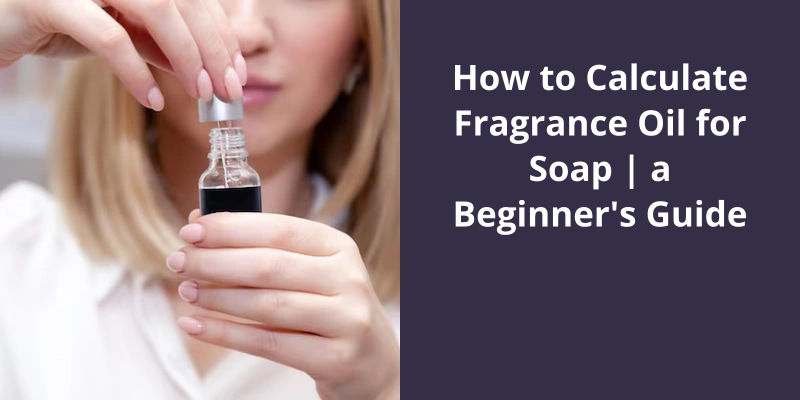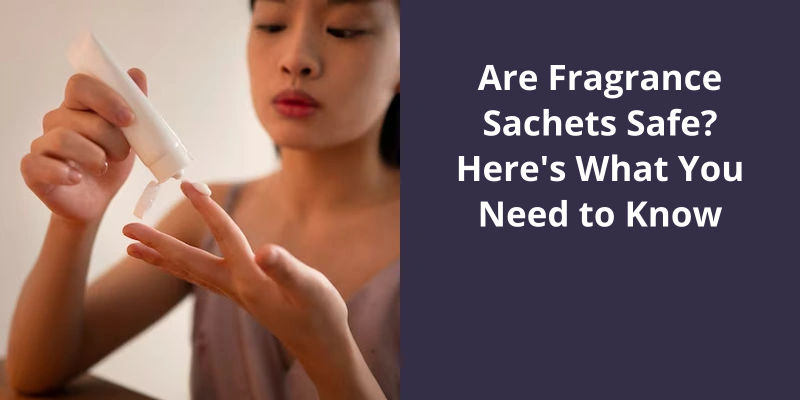Calculating fragrance oil for soap involves determining the percentage of fragrance oil you’d like to include based on the total weight of your soaping oils. For instance, a common recommendation is to use 3-6% fragrance oil. So, for example, if you had 32 ounces of soaping oils, to find out how much fragrance oil you should use, multiply 32 ounces by the desired percentage (as a decimal). If you’re looking to use 5% fragrance oil, your calculation would be: 32 ounces x 0.05 (which is 5% as a decimal). This gives you 1.6 ounces of fragrance oil to be added to your soap mixture. Make sure to adhere to safety guidelines because too much fragrance can cause skin irritation.

How Much Fragrance Oil for 8 Oz Soap?
Some oils are stronger than others, meaning you may need less to achieve the same level of fragrance. It’s important to do a patch test before adding any fragrance to your soap to make sure it doesn’t cause irritation or allergies.
It’s also important to note that some essential oils, such as peppermint or eucalyptus, can be quite strong and overpowering. In these cases, you may need to use less than the recommended usage rate to achieve the desired level of fragrance. Always do a patch test and adjust as needed.
Ultimately, the amount of fragrance oil you use in your soap will depend on a variety of factors, including the type of oil, your personal scent preferences, and the desired strength of the fragrance. As with all aspects of soap making, it’s important to experiment and find what works best for you.
Different Methods for Measuring Fragrance Oil for Soap Making.
There are a variety of ways to measure fragrance oil for soap making, including weighing with a scale, using a dropper to count drops, using measuring spoons, and calculating percentages based on the weight of the soap. It’s important to be precise in measuring fragrance oil in order to ensure desired scent strength and avoid skin irritation.
When it comes to making soap, choosing the right amount and type of oil is critical to achieving the perfect balance of cleansing, moisturizing, and lather. While recommendations may vary depending on the recipe and personal preferences, it’s generally advised to use oil at up to 5% of the total recipe and need oil at 3-6% for optimal results. In the following sections, we’ll explore some popular options for soap-making oils and how to incorporate them into your recipe.
How Much Oil Do You Need to Make Soap?
Making soap can be a fun and rewarding hobby that allows you to have control over the ingredients and scents in your soap. One of the key ingredients in soap is oil, which plays an important role in creating lather and moisturizing the skin. But how much oil do you actually need to make soap? The answer is that it depends on the specific recipe you’re using, but in general, you can use up to 5% of your total recipe in oil.
There are many different types of oils that can be used in soap making, each with it’s own unique properties and benefits. Some popular options include olive oil, coconut oil, avocado oil, and sweet almond oil. When deciding how much oil to use in your soap recipe, it’s important to consider the specific qualities that each type of oil brings to the mix. For example, olive oil is high in oleic acid and is known for it’s moisturizing properties, while coconut oil is high in lauric acid and can create a rich and creamy lather.
In addition to the base oils used in soap making, there are also ingredients called “need oils” that can be added to provide extra benefits. Need oils are typically used at a lower percentage than base oils, usually around 3-6% in soap recipes. Some common need oils include shea butter, cocoa butter, and castor oil. These oils can add extra moisture and conditioning to the soap, as well as help to improve it’s texture.
When working with oils in soap making, it’s important to be mindful of the potential pitfalls. For example, using too much oil can cause the soap to be too soft or greasy, while using too little oil can lead to a dry and crumbly soap. It’s also important to be cautious when working with lye, which is a necessary ingredient in soap making but can be dangerous if not handled correctly.
By experimenting with different oils and percentages, you can create a soap that’s perfectly tailored to your skins needs and your personal preferences. So why not give soap making a try and see what kind of unique creations you can come up with?
Determining the right amount of fragrance oil to add to your candle can be a bit tricky. Going overboard can cause your candles to be too strong or potentially hazardous, while using too little fragrance oil may lead to hardly any scent being detected. In this article, we’ll discuss some factors to consider when deciding how much fragrance oil to add to your 16 oz candles.
How Much Fragrance Oil for 16 Oz Candle?
When making candles at home, one of the key ingredients is fragrance oil. It’s what gives your candles that beautiful scent that fills your home. However, knowing how much fragrance oil to use can be a little tricky. You don’t want to use too little, as that will result in a weak scent, but you also don’t want to use too much, as that could cause the wax to become unstable and result in a less than perfect burn.
So, how much fragrance oil should you use for a 16 oz candle? Well, the general rule of thumb is to use 10% fragrance oil per pound of wax. This may not seem like a lot, but keep in mind that fragrance oils are highly concentrated and a little goes a long way.
Be sure to check the manufacturers recommendations for the specific wax youre using. In addition, some fragrance oils are stronger than others, so you may need to adjust the amount you use based on the strength of the fragrance.
When measuring out your fragrance oil, it’s important to use an accurate scale. Fragrance oils come in different viscosities, so they can vary in weight. This is why measuring by volume (such as using a teaspoon) isn’t recommended. Using too much fragrance oil can cause your candle to have a weak scent throw or even cause the wax to release from the jar or container.
Source: How Much Fragrance Oil Should Be Added to Wax?
Now that you know how to dilute your fragrance oil with a carrier oil, let’s explore some other tips and tricks for creating your own custom scents that will leave you feeling refreshed and renewed.
How Do You Dilute Fragrance Oil With Carrier Oil?
When it comes to enjoying fragrance oils, it’s important to remember that such oils need to be diluted before they can be applied to the skin. This is because essential oils can be highly concentrated and may cause skin irritation if applied directly. To dilute your fragrance oil, you can use a carrier oil or non-scented lotion.
Carrier oils are oils that are derived from nuts, seeds, or kernels from fruits. These oils are ideal for diluting fragrance oils as they’re skin-friendly, gentle, and make a perfect base. Some of the most popular carrier oils include coconut oil, almond oil, jojoba oil, and avocado oil.
This method is particularly useful if you don’t want the fragrance oil to be too overpowering. You can then apply the mixture directly to your skin to enjoy your favorite aroma in a more subtle way.
In addition to diluting fragrance oils, it’s also important to store your oils in a safe place away from heat or sunlight. Exposure to these elements can cause your oils to break down and lose their potency. You should also label your bottles appropriately to ensure that you can identify them quickly and easily.
Proper storage and labeling will also help you keep your oils fresh and potent for longer periods of time.
When making body butter, adding fragrance oil can enhance the experience and make it more enjoyable. However, it’s important to know the right amount of fragrance oil to add to avoid overwhelming the senses or having a subtle scent. In this article, we’ll explore the proper measurement of fragrance oil for 8 oz of body butter and some tips on how to adjust it to achieve the desired scent.
How Much Fragrance Oil for 8 Oz Body Butter?
Body butter is a great way to keep your skin moisturized all day long. It’s made by blending various natural oils and butters until it reaches a smooth consistency. One of the great things about body butter is that you can customize the fragrance to match your mood or preference. But how much fragrance oil should you add to your body butter?
This will provide a good balance of fragrance and moisturization. Keep in mind that fragrance oils vary in strength, so you may need to adjust the amount depending on the oil you’re using.
It’s important to note that fragrance oils should be added to the body butter after it’s cooled down. If you add it while the butter is still hot, the heat can cause the fragrance to evaporate, resulting in a weaker scent. It’s also important to stir the fragrance oil into the butter thoroughly, to ensure that it’s evenly distributed.
If you find that the fragrance is too strong, you can add more body butter to dilute it. Start by adding small amounts of butter and testing the scent after each addition. Again, start with small amounts and test after each addition.
Some fragrance oils may cause irritation or allergic reactions in certain individuals. It’s always a good idea to do a patch test before using a new fragrance oil in your body butter.
With a little experimentation, you can create a body butter that not only nourishes your skin but also smells great!
Conclusion
Careful consideration should be given to factors such as the type of soap, the desired scent strength, and the intended use of the product. By utilizing the appropriate fragrance oil calculators and carefully weighing the recommended ratios, soap makers can ensure that their creations have the perfect scent, while also maintaining safety and quality standards. Whether creating cold process soap, melt and pour soap, rebatch soap, lotion, liquid soap, salts and scrubs, or candles, it’s vital to choose the right amount of fragrance oil in order to achieve the desired level of scent intensity and quality.





